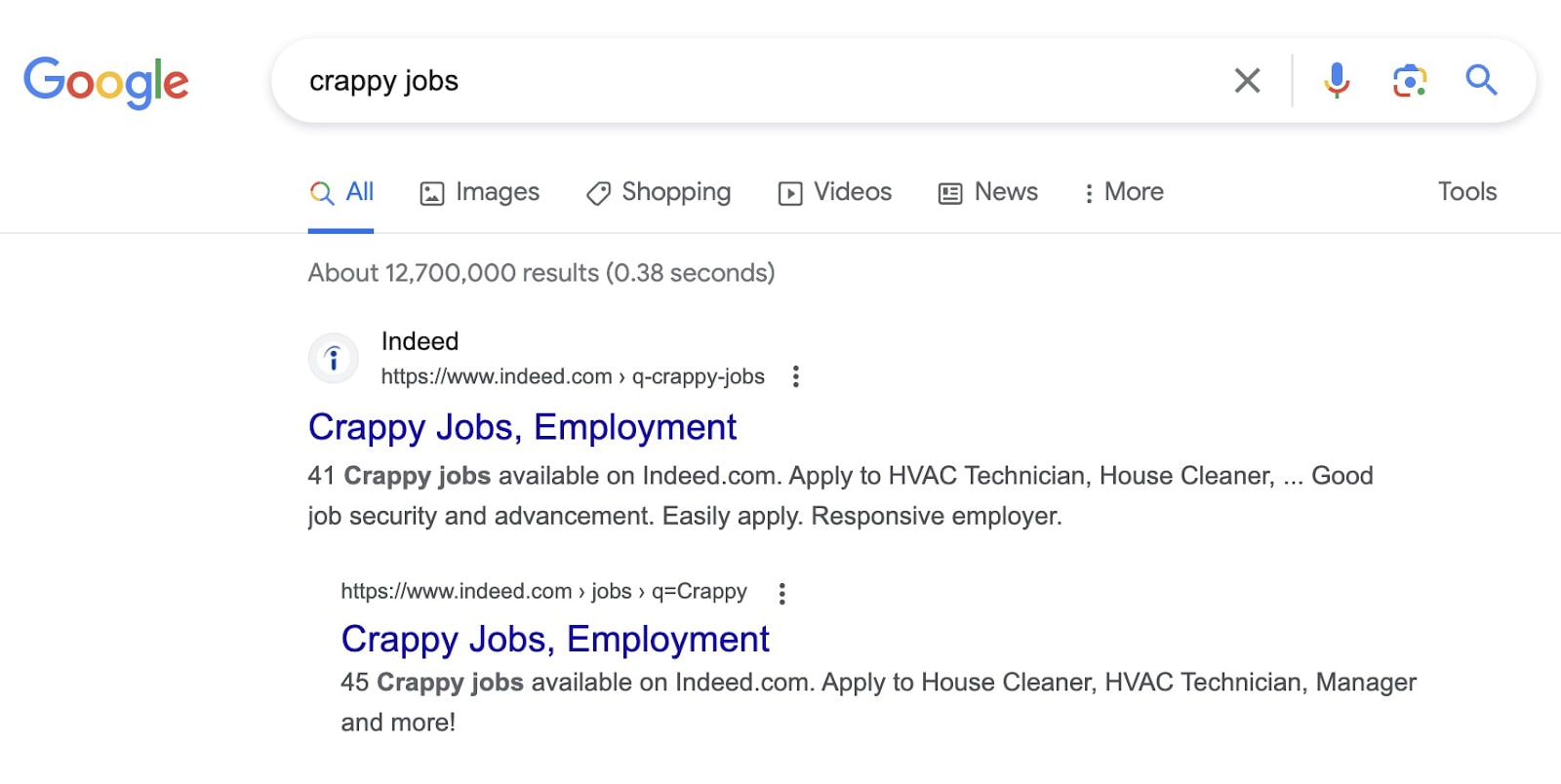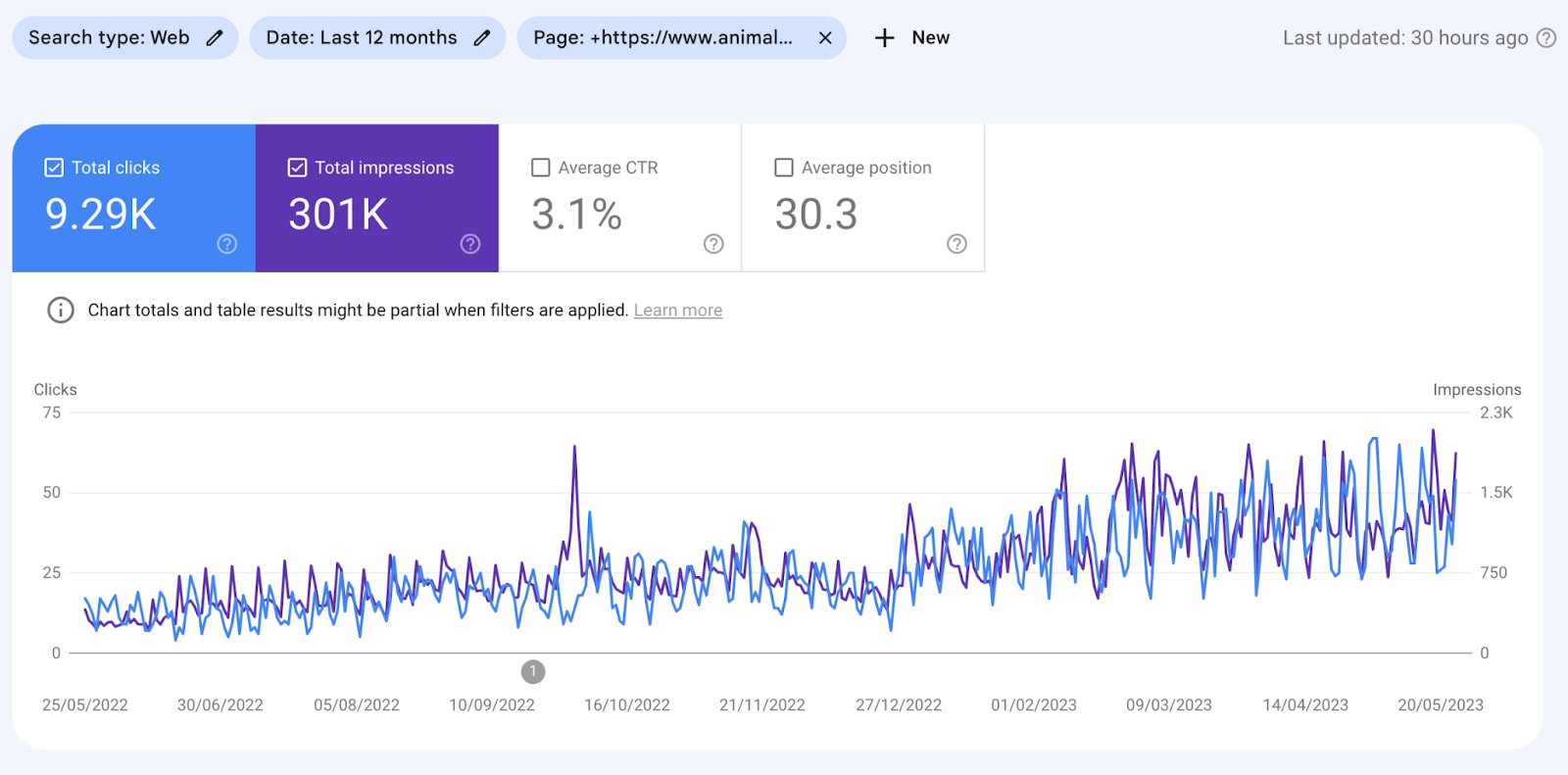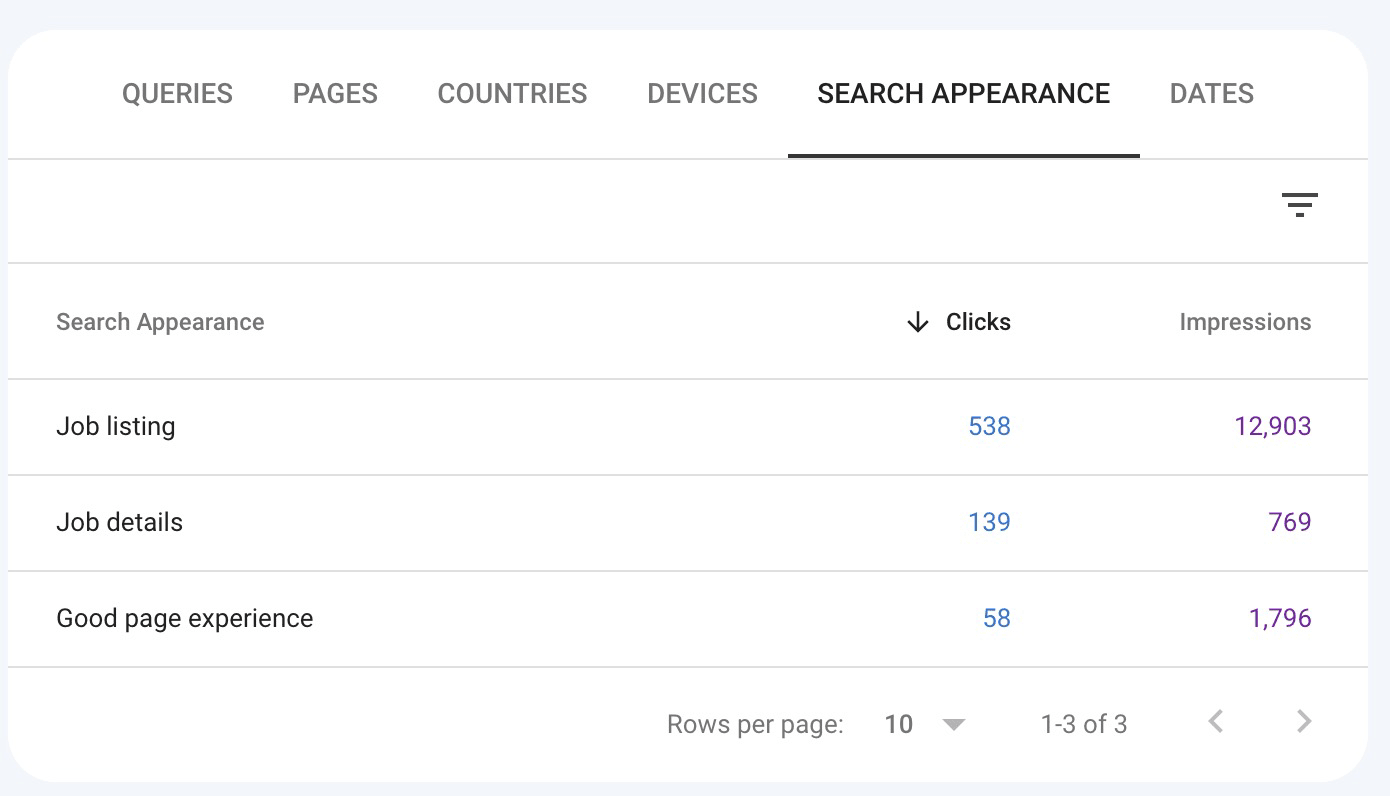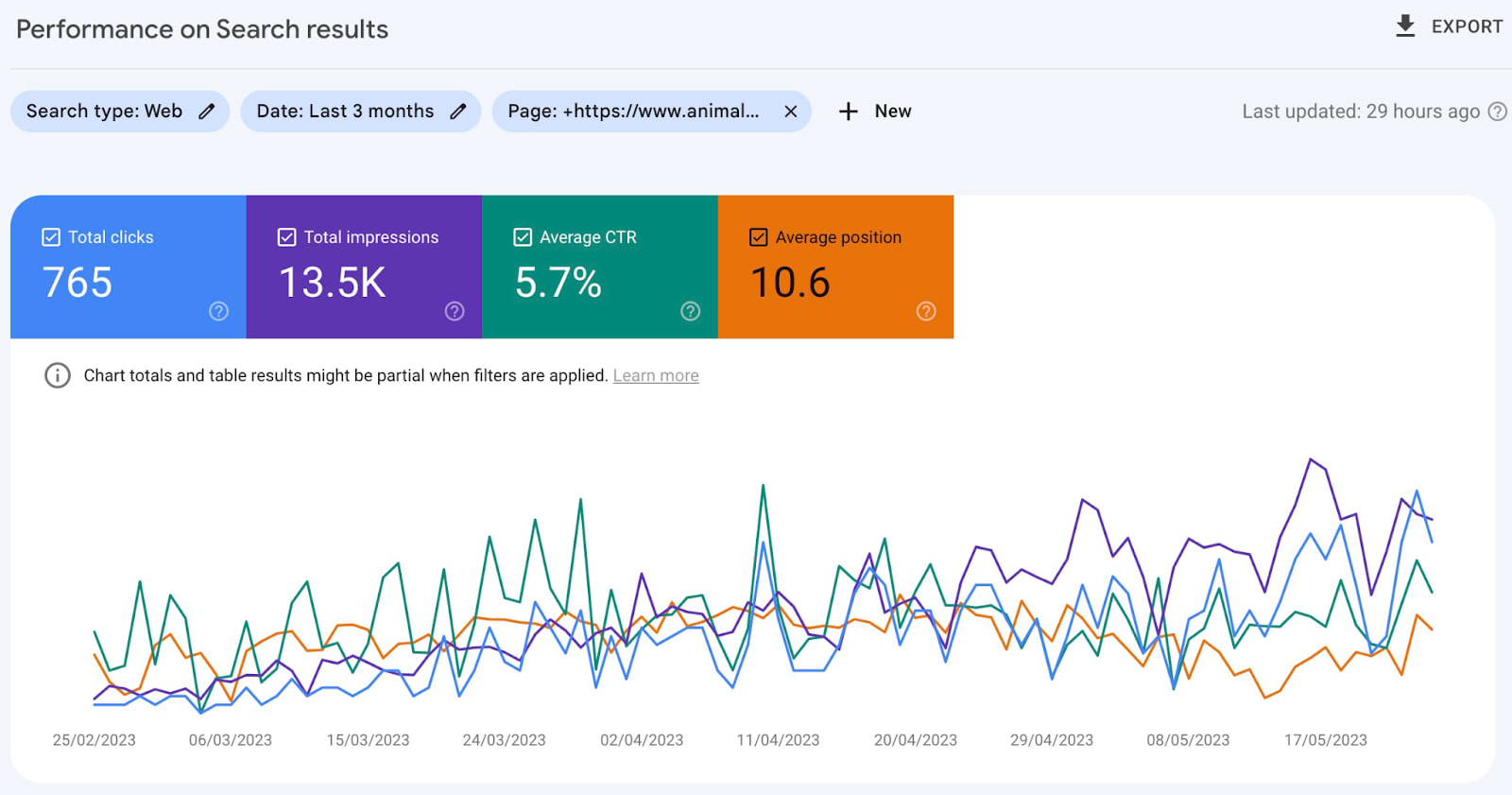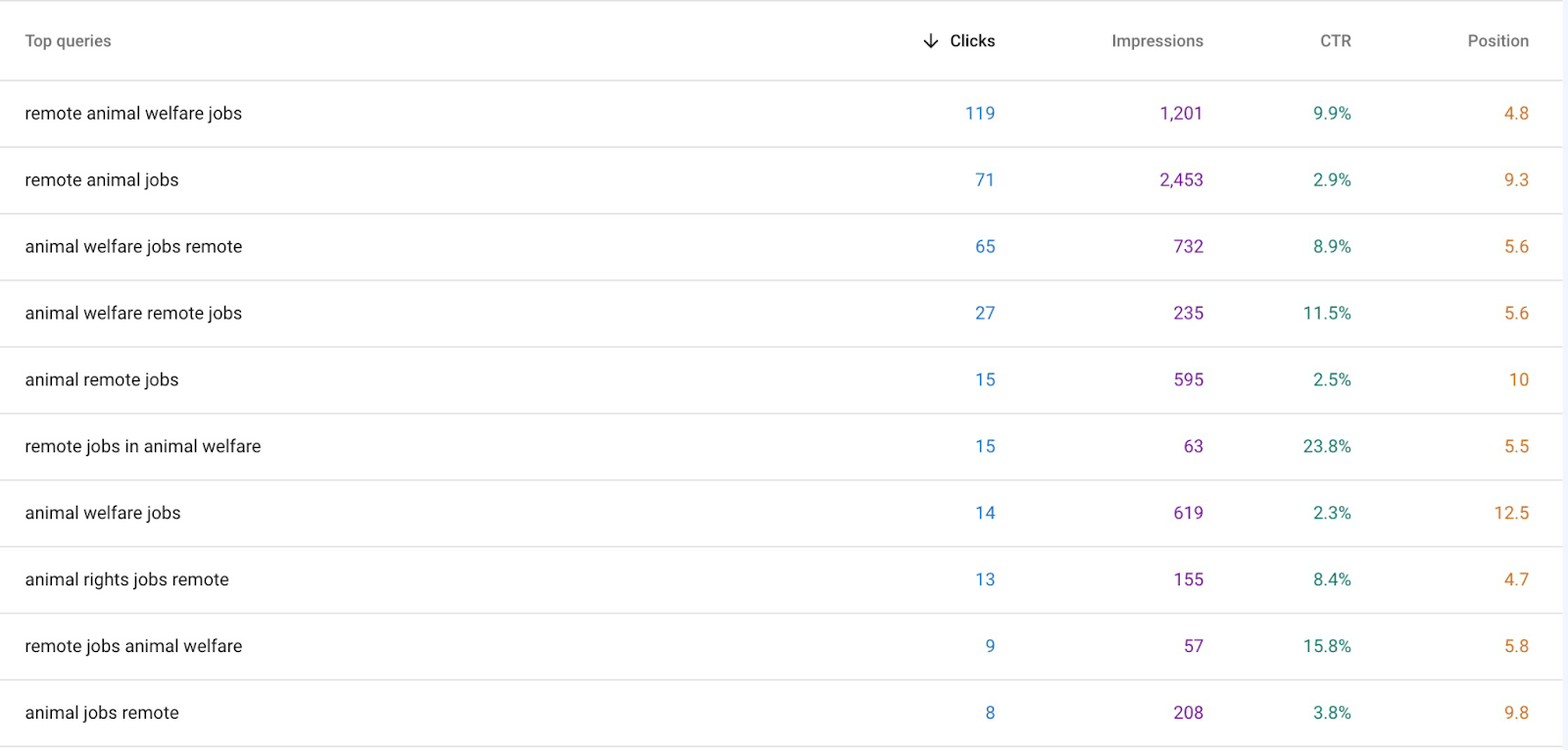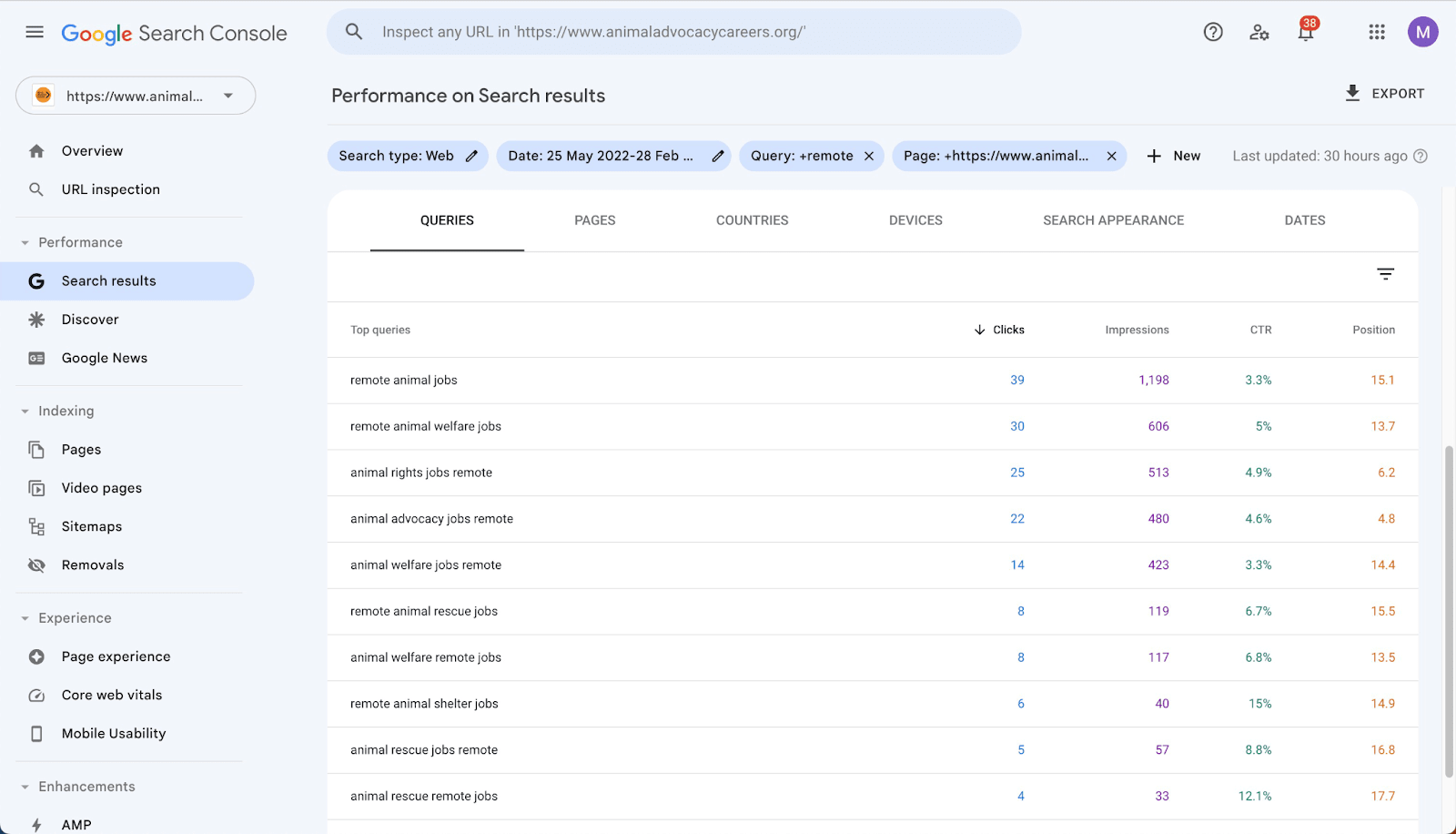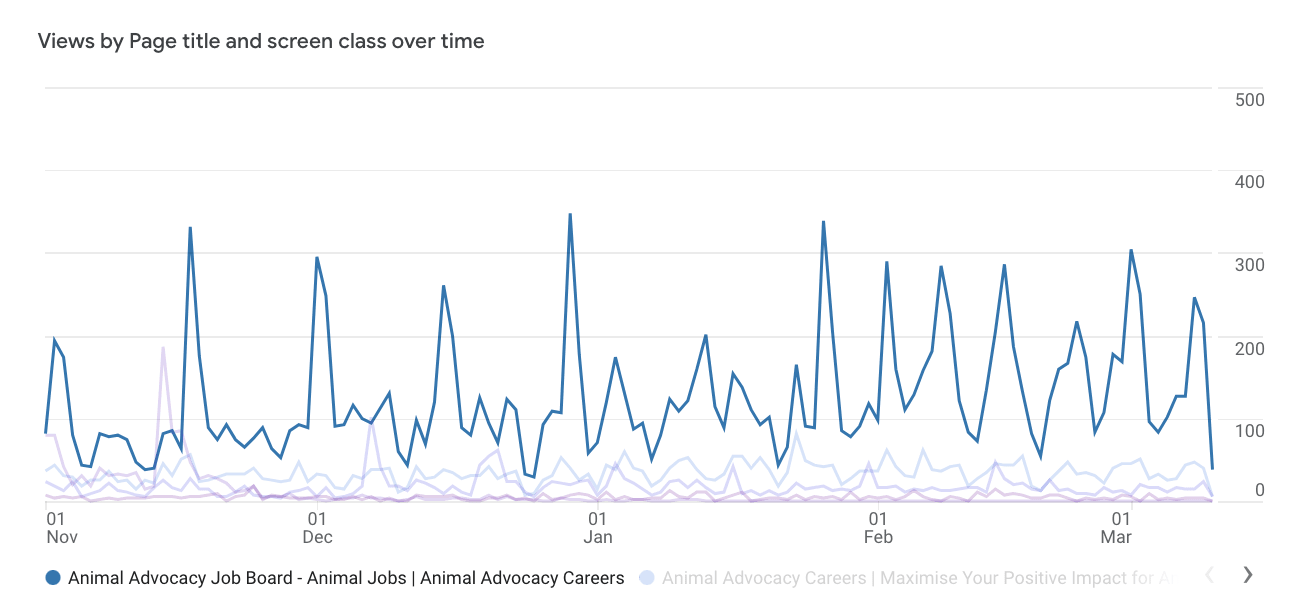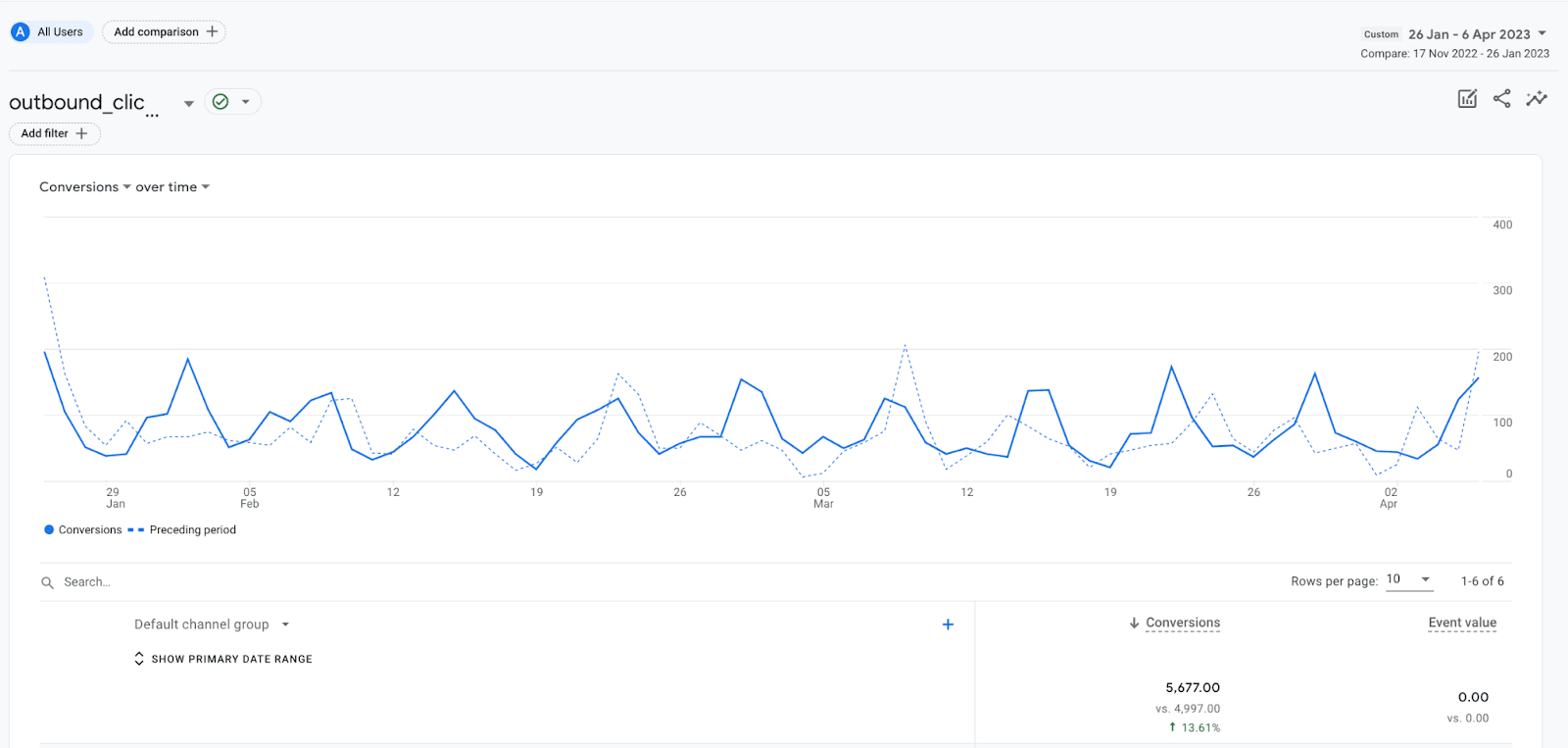How we made Animal Advocacy Careers’ job board grow 199% organically through SEO
By Ana Barreiro @ 2023-06-15T21:10 (+50)
This is a linkpost to https://www.animaladvocacycareers.org/blog/job-board-growth-seo
Summary:
At Animal Advocacy Careers, we have implemented several SEO strategies to grow our job board organically, which have resulted in a 199% organic traffic increase in 6 months. You can replicate these strategies on any website that features content lists or collections that you update frequently (such as any type of opportunities, news, events or articles).
The strategies we have used are:
- Increasing the frequency of updates to weekly (more up to date content)
- Increasing the number of roles on our job board (adding more content)
- Setting up a specific page for each job role
- Setting up structured data markup (adding our jobs to Google Jobs)
- Creating another job board page targeting a different keyword, filtered accordingly (a page specifically for remote animal jobs)
Purpose of this post
My aim is to share these strategies with as many people as possible, enabling you to apply them and foster growth in your own projects/organisations. These techniques are applicable to a wide range of projects and are relatively straightforward to implement.
These strategies are particularly beneficial if you have a website and/or newsletter where you frequently compile and share lists of various items, including:
- Employment opportunities of any kind
- News, articles, or content pieces
- Events and meetup opportunities
- Any content that can utilise structured data markup supported by Google Search
Context: why we wanted to grow our job board organically
The job board is one of the most important programs at Animal Advocacy Careers as it serves as the primary gateway to our website, with 45% of new users discovering us through this platform. Additionally, it has played a crucial role in connecting candidates with animal advocacy jobs within the movement.
As a relatively new and small organisation, we are prioritising marketing efforts that contribute to long-term, sustainable growth. SEO is an ideal strategy since it enables continuous growth even in the absence of ongoing investment, unlike online advertising, which requires constant spending to drive new traffic.
| Topics | Type of traffic / Channel |
|---|---|
| SEO experiments and results | Cold Traffic / Website |
| Email Updates (frequency and personalisation) | Warm Traffic / Newsletter |
| What we are still looking to implement | Website |
SEO experiments and results
Strategies Implemented:
We applied most of these SEO experiments from November 2022 to January 2023, so it is hard to say which one was the most successful - it was likely the combination of all of them.
1. Created specific job description pages for each role
Our job board consisted of a singular page with job opportunities, each linked to the respective role on the hiring organisation's website (external links).
Adding more pages to the job board allowed us to reach a wider audience of people who are not familiar with AAC yet, because:
- With this change, our website got about ~150 more pages that could be discovered each week on the SERP (search engine results page) ranking for different keywords;
- More broadly, Google values websites with a higher number of pages/more content, so it helps all of our other pages rank higher too;
- By creating internal pages on our website instead of linking each role externally, we drastically decreased our bounce rate (which also contributes to SEO);
- Having a unique page for each role is necessary to be featured on Google Jobs (another strategy we wanted to implement, discussed below).
2. We started updating the job board weekly
We were updating the job board every two weeks before this change. We decided to change to weekly because:
- We are updating the job board manually. Since we were only reviewing it every other week, a significant number of expired roles accumulated during each period;
- During the updating process, we came across certain opportunities with imminent application deadlines, and we wanted to ensure our audience wouldn't miss out on potentially beneficial opportunities;
- We wanted to motivate our audience to visit and apply through our job board every week, emphasising the importance of staying consistent and updated in the job searching process;
- We asked our audience and a higher number of people replied that they would like to get weekly updates.
3. We expanded the job board with more roles and organisations
We went from ~20 new roles every other week to ~17 new roles every week. This allowed us to reach more organic traffic. With more individual role pages ranking on Google (and more ranking keywords), we have a higher potential to be found by new candidates looking for animal advocacy jobs.
4. We got our jobs on Google Jobs by applying structured data markup
We implemented Google’s job posting structured data for job search on our job board. Because of that, we were able to show our jobs on Google Jobs.
5. We created other job board pages
It’s hard to rank for many different keywords on one page. Because of this, many job boards and aggregators have different pages on their websites with specific filters set up.
For example, Indeed.com has implemented a dynamic strategy that enables them to rank for various keywords associated with the term "jobs." (which doesn’t work ideally for all cases, so be careful with this): |
In our case, we tested this by creating a new job board page filtered for remote jobs only: https://www.animaladvocacycareers.org/remote-animal-jobs
Results (strategies 1 - 4):
Here’s the organic search performance of our job board on Google for the last 12 months. There has been a significant increase since January.
So far, we had 12,903 impressions and 538 clicks just from having our jobs featured on Google Jobs.
Results (strategy 5):
Here are the results of the new job board page we created only:
Below are the results containing “remote” for our regular job board page before the new page was implemented. Since then, our average position for almost all related keywords containing “remote” has improved, some of them up to 10+ positions higher. The CTR (click-through-rate) in the keyword “remote animal welfare jobs” has also increased from 5% to 9.9%, because our meta-title and meta-description match better the user’s search query.
All job board pages search performance in the last 3 months:
| Clicks | Impressions | |
| All job board pages | 3,233 | 106,557 |
| Main job board page | 2,418 | 81,834 |
| Specific job pages (difference) | 815 (25.2%) | 24723 (23.2%) |
| Remote animal jobs - job board page | 765 | 13,522 |
The specific job board pages count for 23% of impressions and 25% of clicks to our job board. These are pages ranking for their own keywords - even though some are more popular than others, almost all new job pages helped increase our rankings.
Google search data for our main job board page only:
| Clicks | Impressions | Avg CTR | Avg Position | |
May 2023 | 1243 | 35534 | 3.61% | 24.95 |
April 2023 | 1161 | 36188 | 3.31% | 25.14 |
March 2023 | 1198 | 40811 | 3.03% | 29.42 |
Feb 2023 | 964 | 33284 | 3.13% | 32.16 |
Jan 2023 | 974 | 26439 | 3.77% | 30.05 |
Dec 2022 | 625 | 20714 | 3.21% | 37.28 |
Email updates (frequency and personalisation)
Since we started updating the job board weekly (accompanied by a weekly email and social media post), the total number of users on our job spiked each week. We also had a 13.61% increase in the total monthly “apply” clicks.
Spike in page views: from bi-weekly to weekly
Job apply clicks
Future strategies: what we’re striving for
Personalised job update emails
We are now implementing personalised job update emails. Our goal is to send weekly job updates to people based on their preferences.
I still don’t have any results to show from this, but wanted to share our simple process to do it:
- Create an RSS feed based on our job board page with RSS App
- Create different RSS feed URLs for each job category, filtering by keywords at https://siftrss.com/
- Set up weekly automated emails on our email marketing tool which supports RSS feeds (e-goi)
What we still don’t have a solution for
Automated scraping of job posts
Currently, we are updating our job board manually. We monitor organisations’ websites and fill out a spreadsheet with the new roles, then import the CSV into a data collection on Wix. This is tied to dynamic pages (the job board page and job description pages), which update automatically when we import the CSV file.
We are looking into ways to make this process automated, by scraping organisation’s websites and feeding the job data into the spreadsheet.
Implement different types of filters on our job board page
Due to limitations with Wix, we were only able to implement dropdown filters on our job board. This restricts our users from being able to order by deadline or date posted, and some filters don't function as ideally as we hoped. For instance, when users clicked on the "anywhere" option, they would expect to see roles available in their countries, assuming it meant positions available anywhere. Unfortunately, the filter only displays roles with the specific word "anywhere" in the job location, leading to potential confusion and mismatches.
Hey - if you can help us with any of these things we’d love to hear from you! :)
I hope this post has provided you with some useful insights and has sparked motivation within you to apply these strategies to your own work. If you decide to give them a shot, I'd love to hear about your process and journey. Don't hesitate to reach out and ask me any questions you may have along the way!
P.S.: You can subscribe to our job board updates newsletter here.
Rowan Clements 🔸 @ 2024-10-29T00:16 (+3)
This is super helpful, thank you!
I've been adapting your approach for EA NZ's job board.
One question: what are you doing with the job listing pages once the positions close/are filled?
Do you...
- Delete the page, leaving a 404 error?
- Set up a 301 redirect back to the main job board?
- Leave the page up, edited to say that the position is now closed?
I've done a bit of reading, but haven't yet figured out which option is preferable from an SEO perspective.
